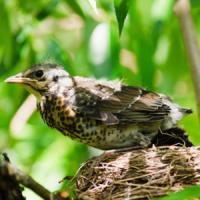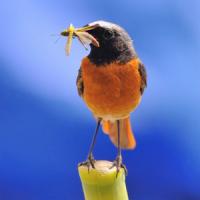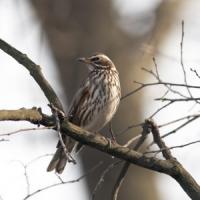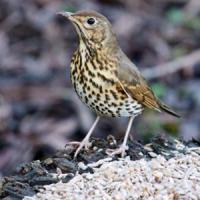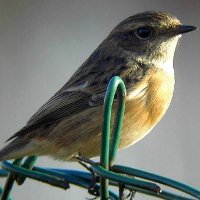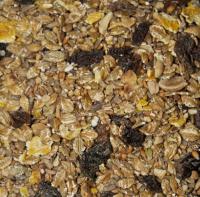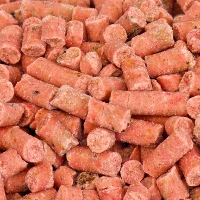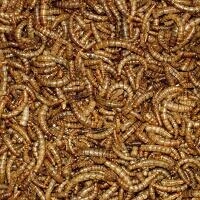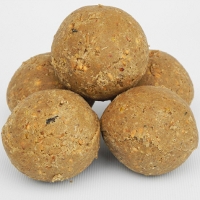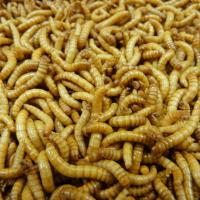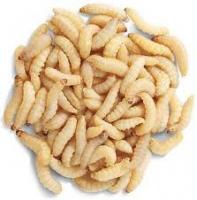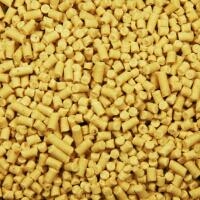- Home
- FAQs
- Customer Video Gallery
- Customer Photo Gallery
- Bird Facts
- Bird Food Blog
- Bird Information
- Feeding Advice
- Small Animal Information
- A to Z of Guinea Pigs
- A to Z of Hamsters
- A to Z of Rabbits
- Basic Care for Guinea Pigs
- Basic Care for Hamsters
- Basic Care for Rabbits
- Basic care for Chinchillas
- Basic care for Ferrets
- Basic care for Gerbils
- Basic care for Mice
- Basic care for Rats
- Buying a Healthy Small Animal
- Does your Reptile need a Licence
- Equipment for Ferrets
- Equipment for Hamsters
- Equipment for Mice
- Equipment for your Chinchilla
- Equipment for your Gerbil
- Equipment for your Guinea Pig
- Equipment for your Rabbit
- Keeping a House Rabbit
- Dog Information
- Cat Information
- Customer Information
- Fat Balls
- Suet Pellets
- Straights
- Seed Mixes
- Suet Treats
- Mealworms
- Bird Feeders
- My Account
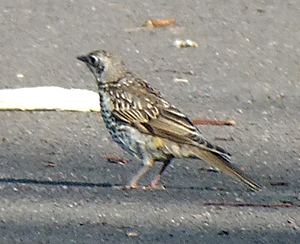
| Scientific Name | Turdus viscivorus |
| Breeding | Feb-May |
| Fledge Days | 16-20 |
| Incubation Days | 12-15 |
| Lifespan | 3 years |
| Number of Clutches | 2 |
| Number of Eggs | 3-6 |
| Size | 27cm |
| Weight | 100-150g |
| Wingspan | 42 - 47.5cm |
Bird Family : Chats and Thrushes
Mistle Thrush Facts - Information About Mistle Thrush
Mistle Thrush - Turdus Viscivorus
The Mistle Thrush is a large thrush, it could only be confused with its cousin, the Song Thrush. Mistle Thrushes dwarf Song Thrushes, they can be up to 10cm larger.
The are a slightly less common breeder and like Song Thrush, numbers increase during winter with continental birds moving in to escape harsh winter conditions.
Identification:
Adult
- Adult males and females are alike.
- Mistle Thrush is less numorous than Song Thrush and prefers more open habitat, during breeding in Summer we only have two ‘spotted’ thrushes to worry about, Mistle and Song.
- Mistle Thrush is a large thrush, larger than Blackbird and huge compared to Song Thrush, it measures close to 30cm and is therefore a third larger than Song.
- Upperparts and tail are dull greyish brown, not as rich as Songs.
- The rump is paler than the rest of the upperparts.
- Tail is long, dark and has white edges and obvious white corners.
- The head appears pale with plenty of white patches, often looks ‘open’ faced.
- Mistle Thrush shows more pale markings on the wings and the underparts are not as buffy as on Song Thrush.
- The Spotting on the underparts are rounded and it often appears to show a dark smudging on the side of the breast.
- It tends to stand very upright and will often search for food in the shadows.
- Undertail is white with some dark flecking.
- In flight the bird appears large, fairly long tailed and the underwing coverts are white.
- Bill is dark with paler lower mandible, eye dark, legs pale.
Juvenile
- Juveniles appear from April onwards and are similar to adults but upperparts more marked.
- Bill and eye black, legs pale.
Status and Distribution
The Mistle Thrush occurs throughout the British Isles, it is a reasonably common breeding resident in the UK with about a 300,000 pairs, however like most British garden birds there has been a marked decline in recent years. The Mistle Thrush occurs in all counties throughout the UK.
In winter numbers increase as migrants come to the UK from Continental Europe to escape their cold winters, migrants start to arrive in October to winter in our less severe climate.
Habitat/Food
Mistle Thrushes are much shyer than Song Thrush and prefer more open habitat, woodlands, parks, large gardens, farmland, hedgerows indeed any open country habitat with suitable scrub.
In the garden Mistle Thrushes specialise in snails they will also eat earthworms, Mealworms and Fruit, as well as Suet and Fat Balls .
Song/Call
Call notes; most often a loud dry repeated rattle, similar to a wooden football rattle. Alarm call is also a hard rattle.
Song is less musical than the other thrushes with short verses and little fluctuation in tone.
The following food is favoured by Mistle Thrush






